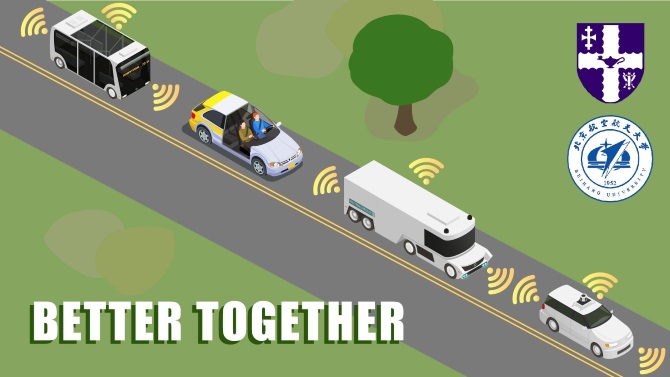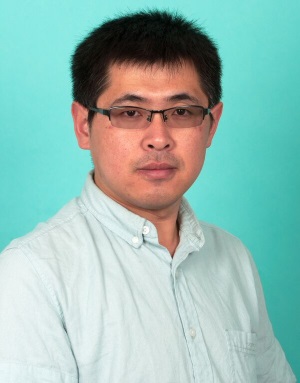29 Jun 2020
AAE Academic secures funding to make our roads ‘Better Together’

Dr Dezong Zhao, pictured below right, and his team at Loughborough University, are working with Professor Daxin Tian at Beihang University, China to tackle the most challenging problems in Connected and Automated Vehicles (CAVs).

Their collaboration is particularly focused on mixed traffic systems consisting of CAVs and human-driven vehicles (HDVs), which play a critical role in future transportation systems. They will answer the fundamental questions in establishing reliable communication and stable platoons.
The work, titled ‘Cooperative Vehicular Communication and Robust Control for Mixed Vehicle Platoons,' was awarded the Royal Society-Newton Advanced Fellowship project in March 2020, securing funding to take the research forward also from the Royal Society and Natural Science Foundation of China, where the research was selected as one of 25 successful projects from 118 applications.
In this project, the Loughborough team leads control and validation, while the Beihang team leads communication and sensing. The combination of special strengths makes the collaboration strong and unique and the collaboration will greatly contribute to the success of the UK Connected and Automated Mobility Roadmap of 2030.
It is anticipated that CAVs will radically improve our lives by providing safe and efficient mobility. Connectivity between vehicles, drivers and cities enables better information flow - the more accessible the traffic, the smoother the journeys and more productive the drivers.
Enhanced connectivity will save driver time and autonomy will significantly enhance safety. It is anticipated that the global CAV market will grow by more than $500bn in 2026, with the UK Government planning to see autonomous vehicles on British roads by 2021.
Loughborough and Beihang teams are establishing reliable and efficient vehicular networks with robustness against time-varying topology, channel contention and environmental noises.
CAVs can bring extra mobility benefits, including increased traffic throughput, reduced energy consumption and lowered exhaust emissions, by implementing cooperative platooning. However, with the gradual deployment of CAVs, there will be a transition phase of mixed traffic systems consisting of both CAVs and HDVs, which is where the research being undertaken by the Loughborough and Beihang teams, will be invaluable - developing high-efficient distributed control strategies to regulate the heterogeneous vehicles in the mixed traffic system.
